CRYPTO, ART AND CLIMATE
RIXC ART SCIENCE FESTIVAL
When
Festival: September 20–22, 2023. Exhibition: September 20–November 11, 2023
Where
Riga, Latvia and Online
ABOUT
The RIXC festival will focus on artificial intelligence, NFT art and crypto and blockchain technologies and will explore how the new generation of internet technologies (or so-called Web 3.0*) are currently changing the landscape of art and culture in the context of one of the major contemporary challenges – climate change.
EVENTS
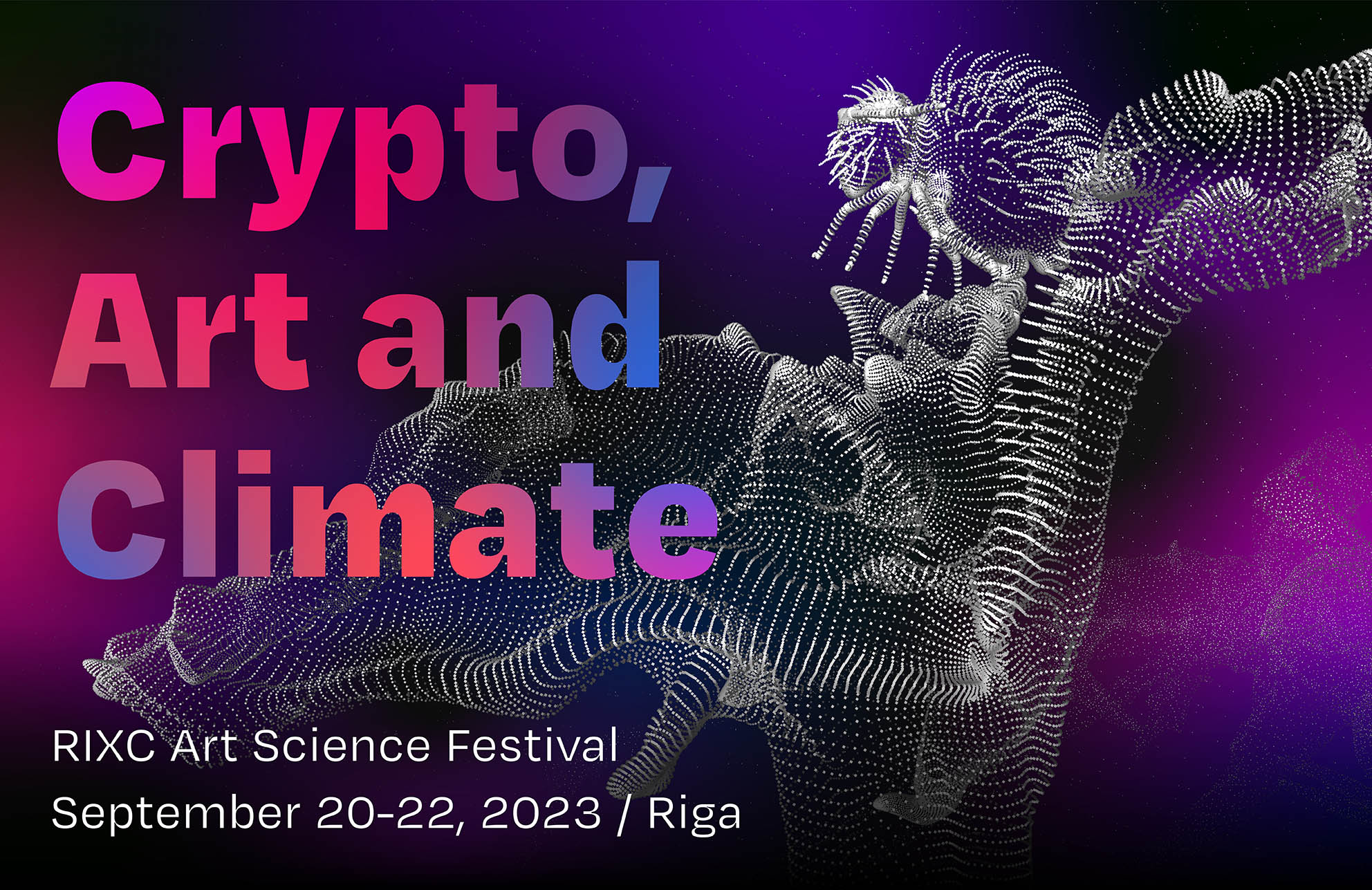
,
The RIXC Art Science Festival 2023: CRYPTO, ART AND CLIMATE takes place in Riga and virtually. The Festival Program includes the OPENING (September 20, 2023), the FESTIVAL EXHIBITION (September 20–November 11, 2023 / National Library of Latvia), the SensUs AR EXHIBITION and ARTATHON (September 21, 2023 / Hybrid: Virtual / Riga), the SYMPOSIUM (September 22, 2023 / Hybrid: Virtual / Riga), featuring artistic performance program.
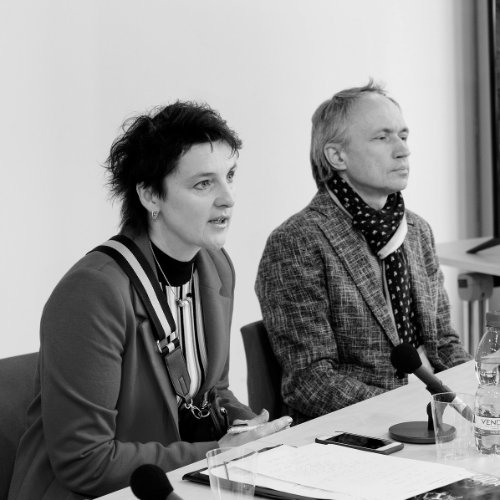
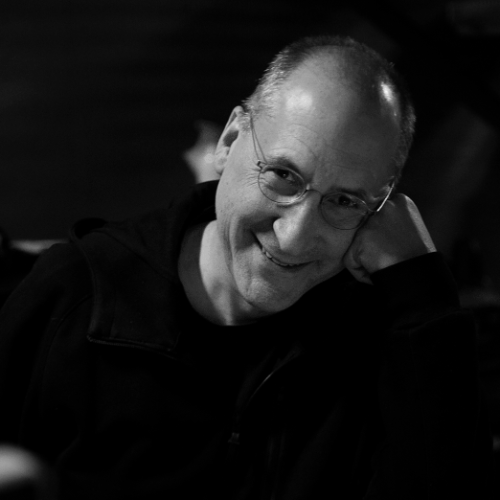
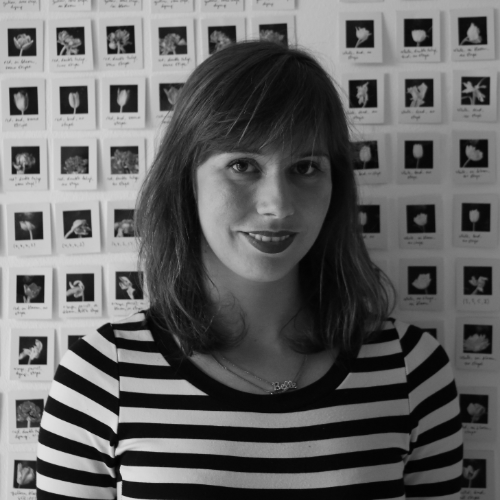
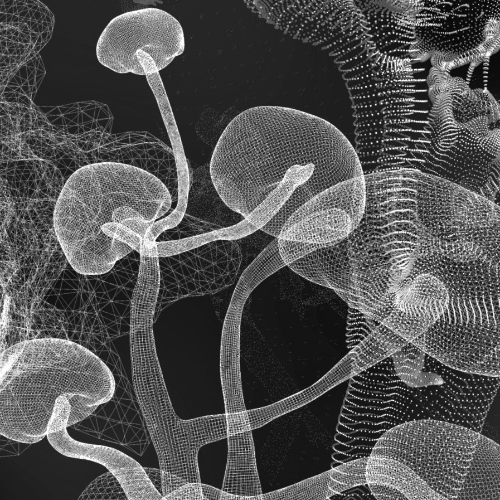
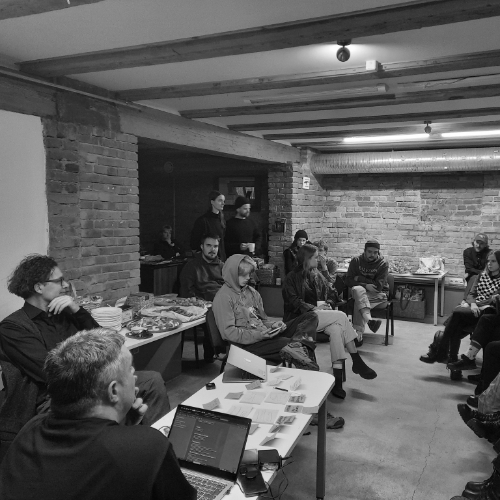
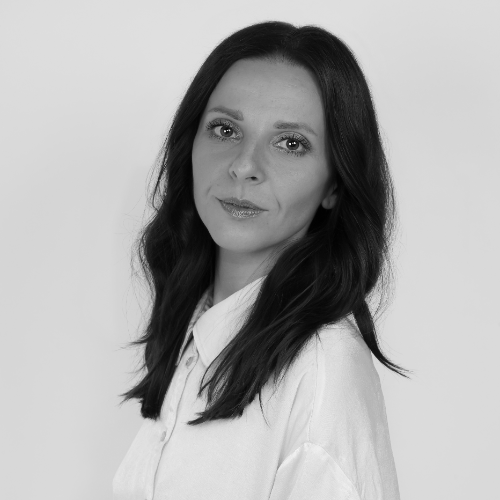
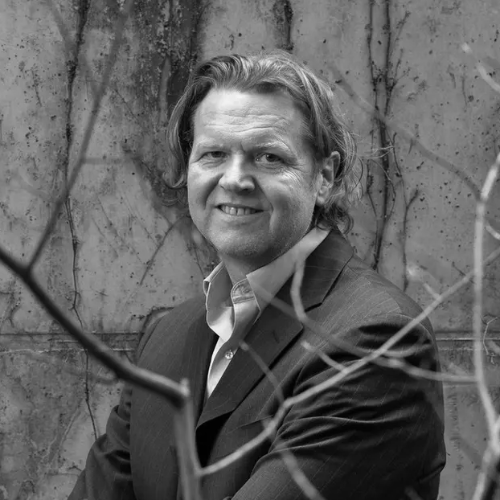

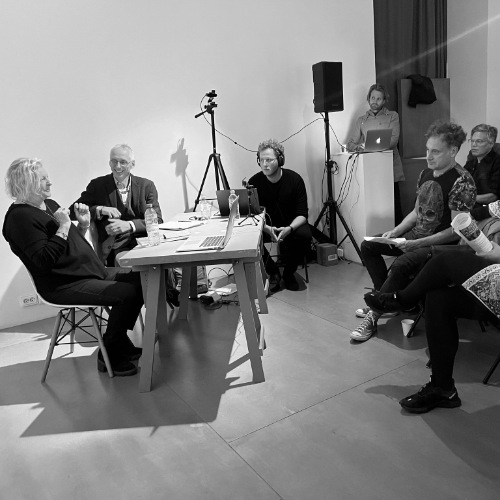
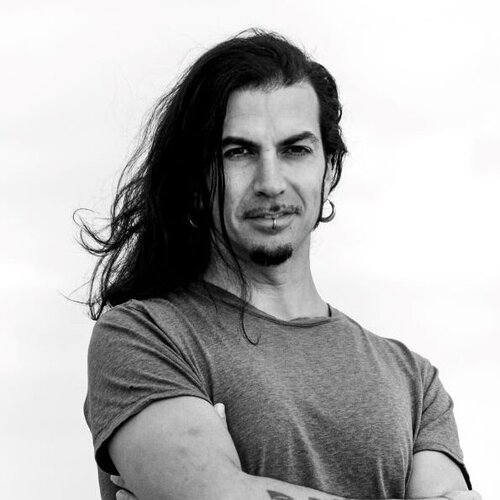
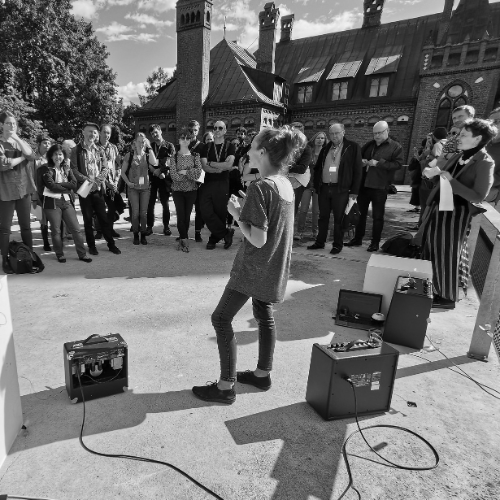

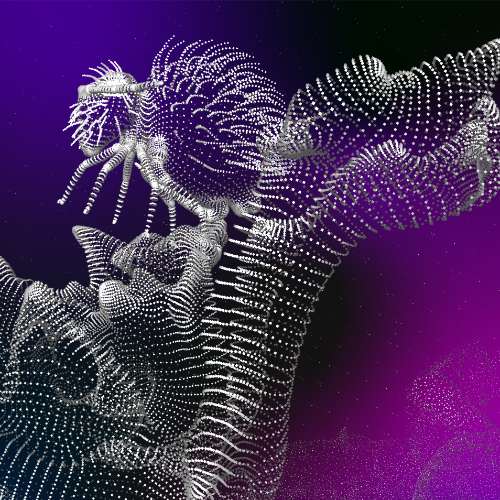


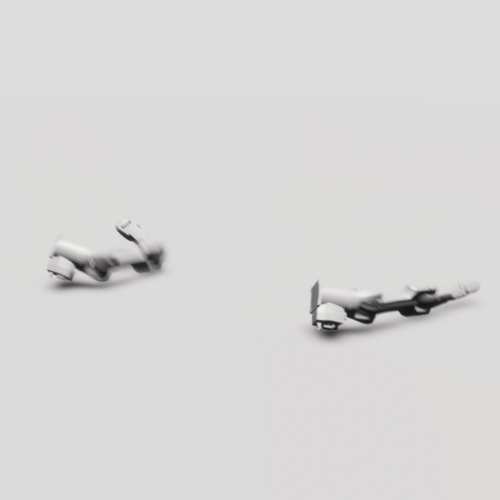
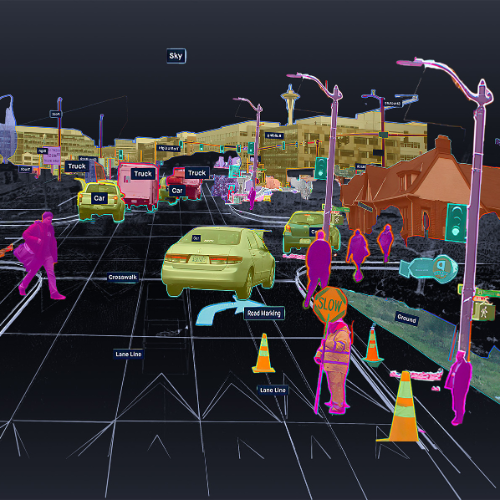
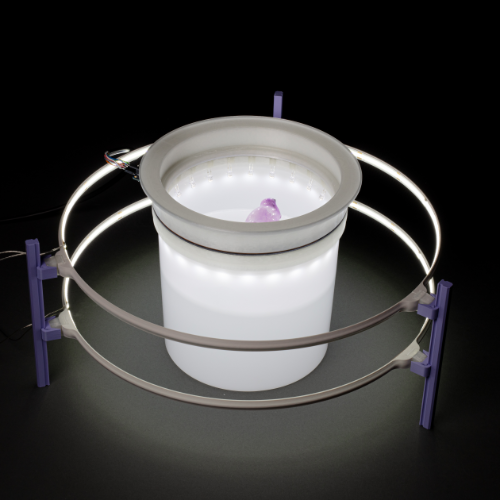


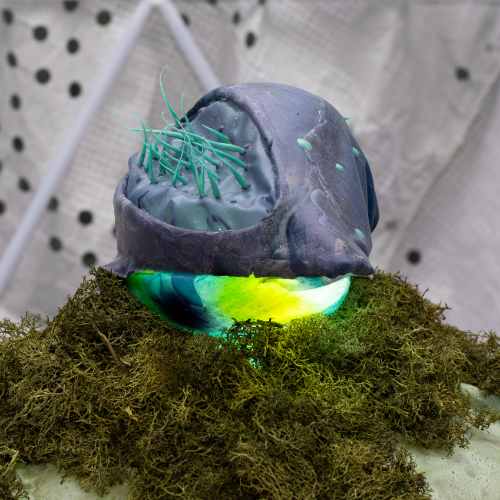
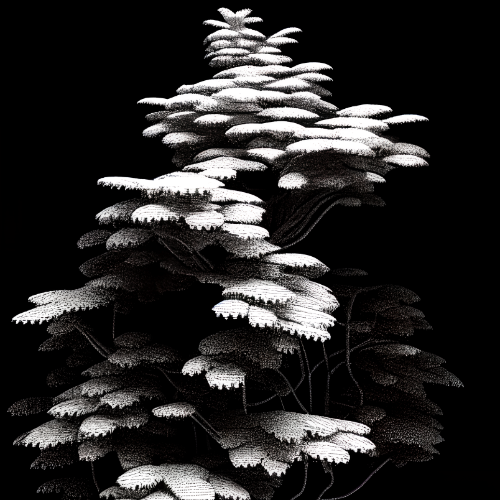
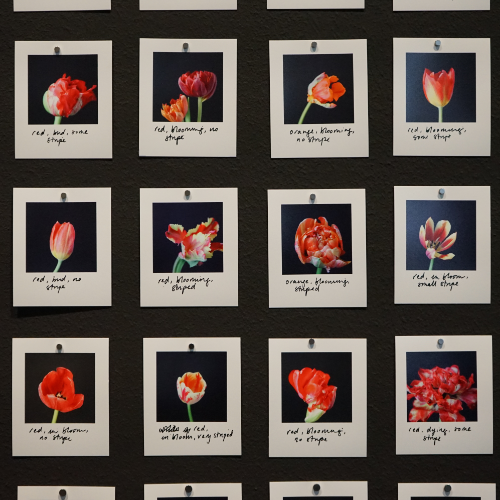
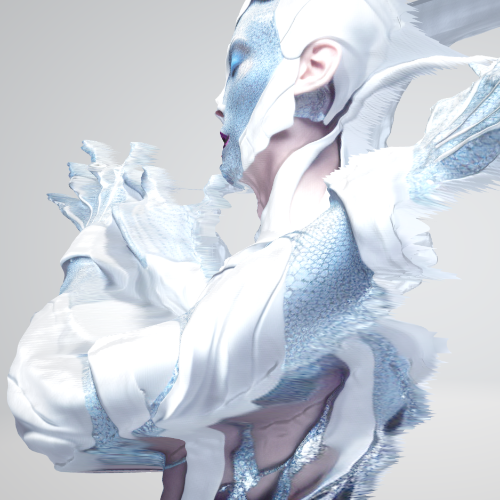
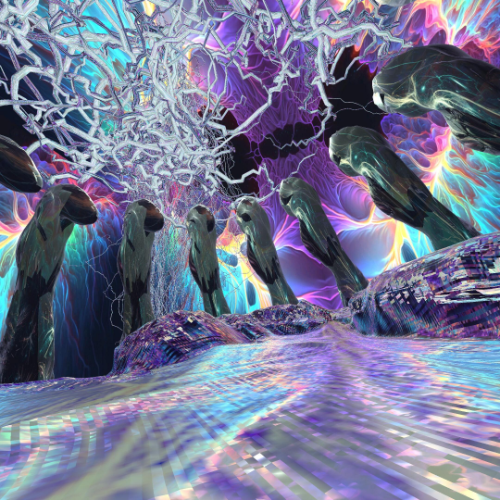
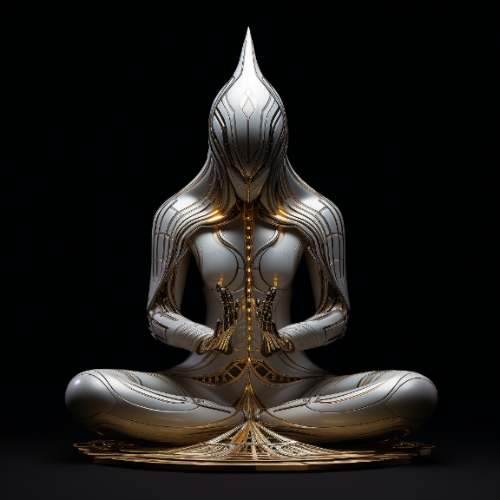
PROGRAMME
(EEST), UTC +3
Opening Keynotes / Artist Talks
Chris SALTER (CA/CH), Anna RIDLER (UK/US)
LOCATION: NATIONAL LIBRARY OF LATVIA (MŪKUSALAS IELA 3 / 11TH FLOOR (ROOF RIDGE) / ZOOMLOCATION: NATIONAL LIBRARY OF LATVIA
Chris SALTER (CA/CH). AI and Extended Reality (XR) Futures
Anna RIDLER (US/UK). Dark Systems
Chris SALTER (CA/CH)
Probing XR’s Futures
Abstract
This talk explores conceptual, historical and practice-based approaches to the emerging domain of XR or extended reality – an umbrella term arising in the mid 2000s describing computer generated environments accessed and experienced through worn headsets and body interfaces. While the histories of VR (only one element in the XR mix) have traditionally been focused on the human experience of mediated space, this talk aims to situate XR in the histories of wearable and ubiquitous computing in which the “interplay between embodied perception and action” is critical and becomes the “focal point of design” (Flach and Holden 1998). Examining a range of historical examples as well as current artistic and research work on XR’s futures emerging from the Immersive Arts Space at the Zurich University of the Arts, the talk aims to critically explore the emergence of new paradigms of sensing and acting in worlds that hybridize the computational and the real.
Biography
Chris Salter is Professor for Immersive Arts and Director of the Immersive Arts Space at the Zurich University of the Arts (ZHdK). He is also Professor Emeritus, Design and Computation Arts at Concordia University in Montreal and former Co-Director of the Hexagram network for research-creation in arts, cultures and technology and Co-Founder of the Milieux Institute at Concordia. He studied philosophy and economics and completed his PhD in theatre studies with research in computer music at Stanford University. His artistic work has been seen all over the world at such venues as the Venice Architecture Biennale, Barbican Centre, Berliner Festspiele, Wiener Festwochen, ZKM, Kunstfest Weimar, Musée d’art Contemporain, Muffathalle, MUTEK, EXIT Festival and Place des Arts-Montreal, among many others. He is the author of Entangled: Technology and the Transformation of Performance ( 2010), Alien Agency: Experimental Encounters with Art in the Making (2015) and Sensing Machines (2022), all from MIT Press.
Festival Exhibition: Crypto, Art and Climate Opening
LOCATION: NATIONAL LIBRARY OF LATVIALOCATION: NATIONAL LIBRARY OF LATVIA
Admission free.
Artists:
Memo AKTEN (TR/US), Nico ANGIULI (IT) & Katerina EL RAHEB (GR), Emanuel GOLLOB (AT), Nicolas GOURAULT (FR), Carolin LIEBL & Nikolas SCHMID-PFÄHLER (DE), Rosa MENKMAN (NL), Joana MOLL (ES), Paula NISHIJIMA (BR/NL), Jurģis PETERS (LV), Anna RIDLER (UK/US), Līga VĒLIŅA (LV), Ieva VĪKSNE (LV), Zane ZELMENE (LV).
Curators: Raitis SMITS, Rasa SMITE (RIXC/LV)
The exhibition is on view until November 11, 2023.
SensUs. Augmented NatureCultures. Opening of Augmented Reality (AR) Exhibition followed by a guided tour through Esplanade park of Riga city
LOCATION (MEETING PLACE): LATVIAN NATIONAL MUSEUM OF NATURAL HISTORYLOCATION: NATIONAL LIBRARY OF LATVIA
Admission free. Please register via rixc@rixc.org
Augmented Reality (AR) exhibition artists: Jung Eun LEE (DE/KR), Isabella MÜNNICH (DE), Anna MANANKINA (UA/DE), Jurģis PETERS (LV), Sabīne ŠNĒ (LV), Rihards VĪTOLS (LV), Zane ZELMENE (LV).
Curators: Daria MILLE (DE/NAIA), Rasa SMITE and Raitis SMITS (LV/RIXC)
SensUs artworks can be virtually experienced in urban environments via the SensUs Art platform, which can be downloaded to your smart device here: https://sensusart.rixc.org/
Auge 2nd Artathon Keynote Panel
Eleonora BRIZI (IT) / Eric NOWAK (CH) / Jane TINGLEY (CA)
Moderator: Rasa SMITE
LOCATION: THE NATIONAL LIBRARY OF LATVIA (GROUND FLOOR) /
ZOOMLOCATION: NATIONAL LIBRARY OF LATVIA
Eleonora BRIZI (IT). NFT. Curating Digital & Crypto Art
Eric NOWAK (CH). Tokenizing Nature: Creating Digital Assets from Environmental Services
Jane TINGLEY (CA). More-than-Human
Jane TINGLEY (CA)
Foresta-Inclusive: Investigating the More-than-Human
This talk will unpack and explore the ideas behind the exhibition more-than-human and the related research project Foresta-Inclusive, which focuses on understanding and visualizing the hidden vitality of trees and the ecology of the forest. The exhibition more-than-human, which took place at the ONSITE Gallery in Toronto, ON. CA in 2023, presented media artworks at the intersection of art, science, Indigenous worldviews, and technology that used multimodal storytelling as a vehicle for interpreting, mattering, and embodying more-than-human ecologies and narratives not necessarily about the world we humans are building. Together the artworks in more-than-human and research project Foresta-Inclusive aim to challenge the mental habit of assuming that humans are superior to everything else on the planet. The humbling act of recognizing that we are not the only ones, not at the centre and not even the subject of others’ conversations supports rethinking our “truths” about ourselves, our place in the world, and the nature of our relationship to multiplicity and difference.
Biography
Jane Tingley is an artist, curator and Assistant Professor at York University. Her studio work combines traditional studio practice with new media tools – and spans responsive/interactive installation, performative robotics, and telematically connected distributed sculpture. Her current artistic trajectory is interdisciplinary in nature and spans the intersection of art, science and technology. Her current work explores the creation of spaces and experiences that push the boundaries between science and magic, interactivity and playfulness, and offer an experience to the viewer that is accessible both intellectually and technologically.
She has participated in exhibitions and festivals in the Americas, the Middle East, Asia, and Europe – including translife – International Triennial of Media Art at the National Art Museum of China, Beijing, Gallerie Le Deco in Tokyo (JP), Elektra Festival in Montréal(CA) and the Künstlerhause in Vienna (AT). She received the Kenneth Finkelstein Prize in Sculpture in Manitoba, the first prize in the iNTERFACES – Interactive Art Competition in Porto, Portugal, and has received support from a number of funding agencies, the provincial arts councils, the Canada Council for the arts, and the Social Sciences and Humanities Research Council of Canada.
(Artathon Workshop 1) AI and Blockchain: Transforming Potential in Arts
Showcase (20 min): Jurģis PETERS / Expert: Eleonora BRIZI
International facilitators (online)
Participants (young people): 35 online participants in Milan, Berlin, Barcelona + 5 onsite participants from Riga
LOCATION: THE NATIONAL LIBRARY OF LATVIA, 11TH FLOOR / ZOOMLOCATION: NATIONAL LIBRARY OF LATVIA
(Artathon Workshop 4) Digital Future Challenges: Blockchain, Art and Economy
Showcase: (joining Workshop 1 with Jurgis Peteris), continued by discusssions: locally in Laznia
Participants (young people): 25 onsite participants in Gdansk
LOCATION: ZOOM / LAZNIA IN GDANSK, POLANDLOCATION: NATIONAL LIBRARY OF LATVIA
(Artathon Workshop 2) Art, AI and the Metaverse: Reality Shift
Showcase (20 min): Ieva VĪKSNE, Līga VĒLIŅA (tbc.)
Local facilitator: Līva SILIŅA (RIXC / LV)
+ International facilitators (online)
Participants (young people): 25 onsite participants in Riga + 5 online participants
LOCATION: THE NATIONAL LIBRARY OF LATVIA, EXHIBITION HALL (GROUND FLOOR), VIRTAKA ROOM / ZOOMLOCATION: NATIONAL LIBRARY OF LATVIA
(Artathon Workshop 3) Green Digital Utopia and Augmented Nature-Cultures
Showcase (20 min): Jung Eun LEE (KR/DE), Anna MANANKINA (UA/DE), Isabella MÜNNICH (DE), Expert: Jane TINGLEY (CA)
Local facilitator: Līga BRICE (RIXC / LV) + International facilitators (online)
Participants (young people): 25 onsite participants in Riga + 5 online participants
LOCATION: THE NATIONAL LIBRARY OF LATVIA, OUTDOORS, VIRTAKA ROOM / ZOOMLOCATION: NATIONAL LIBRARY OF LATVIA
Auge 2nd Artathon Final Presentations
LOCATION: THE NATIONAL LIBRARY OF LATVIA, VIRTAKA ROOM (GROUND FLOOR) / ZOOMLOCATION: NATIONAL LIBRARY OF LATVIA
Sound Art and Live Performance
LOCATION: RIXC GALLERY, LENCU IELA 2, RIGALOCATION: NATIONAL LIBRARY OF LATVIA
Platons BURAVICKIS (LV), Krista DINTERE (LV), Juan C. DUARTE REGINO (MX/FI), Patrick BORGEAT (DE), Elza ZĪVERTE & Kaspars JAUDZEMS (LV), Raivo MIHAILOVS (LV)
KRISTA DINTERE
Spatial sound composition playback including pieces by Krista Dintere as well as a selection of Liepaja University New Media Art student compositions. Krista Dintere is an artist from Liepaja, Latvia working between the fields of Sound Art, Experimental Composition, Media arts and creative research. In her works she explores the borders of physicality of sound and how sound is communicated between humans through psychoacoustics. Recently focusing on site-specific installations and experimental compositions which try to reveal the relationship between factuality of field recordings and fictional sonic worlds created by means of artistic interpretation.
RAIVO MIHAILOVS un VJ trepz
ELZA ZĪVERTE un KASPARS JAUDZEMS
In this performance the artist duo use digital wireless sensors to track in real time body and heart (ECG) motion. Live data from the sensors is being sonified and visualized. The performance is an improvisation based on a loose script and live interaction between the artists. While Elza improvises the choreography by mainly listening to the sound, Kaspars writes and executes code on the fly (live-coding) that applies different algorithms mapping the data to create sound & visuals. The performance explores the connection between the heart, breath and movement and brings their raw beauty into a purely digital environment – a created digital world, to reflect upon our new-normal, virtual daily surroundings.
PAULA VĪTOLA
PLATONS BURAVICKIS
PATRICK BORGEAT
A/V Live Coding Performance: 46.875
46.875 is a live coding performance that explores interference patterns, audio-visual coupling on a data level and intrinsic properties of software systems. Sound is improvised using the SuperCollider programming language while a slice of the synthesised audio data of each audio channel is displayed as thin white lines at each video frame to create tightly coupled visuals. The title 46.875 stems from the fundamental frequency of this piece which can be derived from the audio sample rate (48000 Hz) divided by the size of the slice of generated audio data that is displayed at each frame (1024). This number is crucial
Keynote Talk. Memo AKTEN (TR/UK).
Distributed Consciousness
Moderator: Rasa SMITE
VENUE: NATIONAL LIBRARY OF LATVIA, CONFERENCE CENTER HALL A (LEVEL -1) / ZOOM (ONLINE FROM MELBOURN)LOCATION: NATIONAL LIBRARY OF LATVIA
Panel 1 [AI] Artificial Intelligence and Future of Media Art
Emanuel GOLLOB (AT) / Rihards VĪTOLS (LV) / Dietmar KOERING /
Eva SOMMEREGGER / Sebastian MÜHL / Kristin BERGAUST (NO)
Moderator: Peter ZORN
LOCATION: THE NATIONAL LIBRARY OF LATVIA, CONFERENCE CENTER HALL A (LEVEL -1) / ZOOMLOCATION: NATIONAL LIBRARY OF LATVIA
Moderator: Peter ZORN
Artist Presentations:
Emanuel GOLLOB (AT).
Rihards VĪTOLS (LV). Mežs (Forest)
Contributors to the Discussion:
Dietmar KOERING / Eva SOMMEREGGER / Sebastian MÜHL. Probing the Digital: Cyborgs, Avatars, and AI [online from Germany and Austria]
Kristin BERGAUST (NO). Futures of Living Technologies
Emanuel GOLLOB (AT). disarming
Abstract
An exploration of the relationship between detached robot arms, artificial environments, and human observers, as well as a search for potential future roles of robotics & AI in our society. A learning and unlearning of locomotions in postanthropocentric environments and times, playfully exploring the ambiguity of disarming as a process of physical detachment and emotional attachment. Locomotion can be seen as a primal (post-birth) instinct and ultimate act of independence. A robotic limb, somehow detached from a human-constructed technological body, tries to find concepts for advancing movements even though it initially wasn’t made for locomotion – vulnerable yet determined. Parallel to a familiar dystopian plot of technological autonomy and the feelings going with it, witnessing these first clumsy tries may awaken compassion or even a certain emotional bond.
Biography
Emanuel Gollob investigates today’s relations of humans, artificial intelligence & robots with the goal of making alternative relations bodily experienceable. In parallel, his work traces the change in human perception in connection to digitalization. Since 2020, he has been a PhD candidate and researcher at the University of Arts Linz. In 2023, he was a guest artist at the ZKM | Center for Art and Media in Karlsruhe. Subsequently, he became EMAP residence artist at the WRO Art Center.
Rihards VITOLS (LV). Mežs / Forest
Abstract
The AI generated 3D artwork is a utopian, speculative vision of a new, more resilient tree species. The artwork explores futurological palaeontology – a hypothetical field of science that studies, analyses and interprets organisms that have not yet evolved, showing the potential of science to explore the unknown life forms on Earth in future. The artist’s created collection of trees is an unimaginable, abstract and unimaginable simulation of nature in the future.
Biography
In 2021 he received Ph.D. from the University of Washington In Digital Art and Experimental Media (USA). Between 2015–2017 he was studying at the Academy of Media Arts Cologne (KHM) where he got his Diploma 2. Before that, I graduated with a Master’s in New Media Art from Liepaja University (LV), and part of that time studies he spent at Bauhaus-Universität Weimar (DE). I have participated in several exhibitions: 2019 – 2021 MAK Austrian Museum of Applied Arts, Design Lab, Austria; 2017–1018 The Exhibition Hall Arsenals of the Latvian National Museum of Art “The Future State”; 100 in Latvian Art “Daugavpils Mark Rothko Art Centre”; 2015 Maison du Design “Transformative Ecologies” Belgium; France 2018 MINATEC “Experimenta”; Italy 2014 co-author for Latvian showroom in “Venice Architecture Biennial”; Netherlands 2018 Zone2Source “Machine Wilderness”; 2017 “Dutch Design Week” and Transnatural Art Design “Robotonica”; 2016 MU “Weather or Not”.
Dietmar KOERING / Eva SOMMEREGGER / Sebastian MUEHL Probing the Digital. Cyborgs, Avatars, and AI. A Workshop Report
Abstract
Cyborgs and avatars embody contemporary forms of human existence in digital and mixed reality spaces. Recent developments in technology (virtual worlds, prosthetic augmentations, artificial intelligence) require more than ever a reconsideration of the perceptual, ethical, and aesthetic dimensions with regard to interconnections of human subjects, technologies, and digital media. This talk will offer a short report of the interdisciplinary workshop “Probing the Digital. Cyborgs, Avatars, and AI,” which took place at Art Academy of Latvia, on 14./15.09.2023, and which brought together international scholars, professionals, and practitioners from the field of post- and transhumanism, media theory, contemporary arts, and creative practices. Besides looking at digital-hybrid embodiments and current trends in artificial intelligence, the workshop focused on creative practices in the Baltics.
Biographies
Sebastian Mühl is a Senior Researcher at the LMDA Research Institute at the Art Academy of Latvia. He studied philosophy and fine arts in Munich and Leipzig and holds a PhD in art and media studies from Offenbach University of Art and Design. Sebastian was a guest professor at Klagenfurt University and HfG Offenbach. In 2020/21, he worked as Digital Curator at the Dresden State Art Collections, where he launched the exhibition platform voices. His book Utopien der Gegenwartskunst was published in 2020.
Dietmar Köring, based in Cologne, is a versatile professional in architecture, research, and education. He leads Arphenotype, an architectural research office pushing interdisciplinary boundaries. A Senior Guest Researcher at Latvia‘s Art Academy, he was an Assistant Professor at TU Berlin and taught at TU Braunschweig and Innsbruck University. Recognized with the Jaap Bakema Fellowship, his works have been featured globally, including MoMA New York and Deutsches Technikmuseum Berlin.
Eva Sommeregger is a Vienna-based researcher and architect, she works as a Senior Researcher at the Art Academy of Latvia and at the Academy of Fine Arts Vienna. Her research investigates overlooked (digital) spaces as means of identifying entangled power relations and alternative forms of thinking. Eva is also co-founder of eyetry architecture.
Kristin BERGAUST (NO). FeLT – Future of Living Technologies
Abstract
FeLT- Futures of Living Technologies is a transdisciplinary artistic research project funded for 2020-2023 by the Norwegian Artistic Research Programme. The project is comprised of an artistic postdoc project, a PhD project and several collaborations with artists, scientists and humanities scholars. We learn by field work, residencies, seminars, conferences and exhibitions.
Our Main strands of investigation are:
Making with: multispecies communication and co-creation.
Living technologies: living environments, humans, machines, intelligence, life and emotions
Sensorium: how we experience, interpret and develop applied aesthetics today
Key words: contemporary art, non-humans,interspecies relations, eco-aesthetics, transdisciplinarity
Biography
Kristin Bergaust is educated at the University of Oslo and at the National Academy of Fine Art in Oslo. She works as an artist, researcher and educator. She is a professor at the Faculty of Technology, Art and Design in OsloMet, Oslo since 2008, formerly professor and head of Intermedia at Trondheim Academy of Fine Arts, NTNU (2001-2008). Currently, she supports transdisciplinary efforts to contribute to ecological and transcultural processes through artistic research methods and technological developments. She leads the artistic research project FeLT Futures of Living Technologies 2020-2023 and participates in several artistic and curatorial projects.
Panel 2 [Green] AI, Art and Climate Change
Carolin LIEBL & Nikolas SCHMID-PFÄHLER (DE) / Paula NISHIJIMA (BR/NL) / Juan DUARTE (MX/FI) / Maija DEMITERE (LV) / Nina CZEGLEDY (CA) / Jane TINGLEY (CA) /
Moderator: Jens HAUSER (DE/FR)
LOCATION: THE NATIONAL LIBRARY OF LATVIA, CONFERENCE CENTER HALL A (LEVEL -1) / ZOOMLOCATION: NATIONAL LIBRARY OF LATVIA
Moderator: Jens HAUSER (DE/FR)
Artist Presentations:
Carolin LIEBL & Nikolas SCHMID-PFÄHLER (DE)
Paula NISHIJIMA (BR/NL).
Maija DEMITERE (LV). Art+ EcoWork Selection
Juan DUARTE (FI) Atmospheric Listening: Strategies Of Resilience For Attuning To Our Weather.
Contributors to the Discussion:
Jane TINGLEY (CA), Nina CZEGLEDY (CA)
Carolin LIEBL & Nikolas SCHMID-PFÄHLER (DE). Aesthetics Of The Decay Of Biodegradable Plastic
Fleshy-looking anamorphic objects reminiscent of organs or photophobic deep-sea creatures are floating in an artificial environment. We watch them as they slowly age, become porous, and finally dwindle away—observing these bodies decay. In a laboratory setup, a small sculpture is immersed in a cylindrical container filled with caustic soda. The object is made of polylactic acid (PLA for short), a biodegradable plastic derived from plant-based raw materials. The decomposition, superficial at first, gradually distorts the sculpture until it finally breaks down into lactic acid and then into carbon dioxide and water. The disintegration process extends over several months; due to the caustic bath, it occurres much faster than in nature. As a long-term research project, the installation fading substance examines the temporal and chemical processes involved in the decomposition of biodegradable plastics in a visually palpable way.
Carolin Liebl and Nikolas Schmid-Pfähler have been working as an artist duo since 2012, creating works in which material qualities of a visual and haptic nature are just as important as programmed processes, algorithms and physical laws. Using elements of kinetics and robotics, the duo creates sculptures and installations that explore the impact of technological developments on aesthetic and social aspects of life. Liebl and Schmid-Pfähler founded and run the interdisciplinary studio house Atelier Wäscherei in Offenbach am Main.Their work has been shown in solo exhibitions at Working Artist Studios (Ballydehob), Kunstarkaden Kempten, and the Centre for art and sience (Mainz). The duo was represented with its works at numerous group exhibitions and festivals, including Kunsthalle Praha (Prague), Sapporo International Art Festival (SIAF) in Sapporo, Bundeskunsthalle (Bonn), WRO Biennale in Wrocław, and International Symposium on Electronic Art (ISEA) in Dubai.
Paula NISHIJIMA (JP/BR/NL). Plug-in Habitat
Plug-in Habitat is based on the question posed by the architectural neo-futuristic group Archigram in the 1960s: what would happen if the whole urban environment could be programmed and structured for change?
The notion of an architecture that adapts to change is also embodied in the intelligence of plants—whose structure is modular and distributed, without a central control, but with a cooperative organisation that adjusts to altering conditions in their context.
In Plug-in Habitat, Paula Nishijima investigates adaptive strategies of plants as well as their relationship with other species and the environment. The artistic research is translated into an interactive installation composed of one living organism, a cushion plant and two artificial modules. The modules in the exhibition receive information from the plant about how it adapts to the changes in the environment—and respond to each other in a feedback loop of interactions that regulates the whole system.
In collaboration with Biomimetic Laboratory (Marlén López and Manu Persa)
Paula Nishijima is a visual artist with a research-based practice that unfolds at the crossroads of art, life science, and technology. She investigates the collective, self-organised behaviour of living systems in nature, and how it inspires more collaborative, sustainable and ethical forms of relationships between humans, nonhumans, and the environment. Her artistic research is materialized into different media, e.g., video and bioart. Recent exhibitions include Plug-in Habitat, LABoral Centro de Arte, Gijón, Spain (2022); 20th Media Art Biennale WRO, Wroclaw, Poland (2023); Here and Now, Media Art Festival, Leeuwarden, Netherlands, 2021.
Juan C. DUARTE REGINO. Atmospheric listening: strategies of resilience for attuning to our weather.
This ongoing artistic research delves into the multifaceted realm of environmental sound , digital music instruments making , and the historical underpinnings of meteorology . By seamlessly intertwining affective, cultural, and technological facets, this study embraces a broad perspective, moving beyond a one-dimensional approach to the study of atmospheric phenomena which contrast to previous efforts in the field of environmental sound. This holistic methodology intricately weaves together the subtleties of both natural and artificial domains , which profoundly influence our perception, consciousness, and connection to the atmospheric milieu . To encapsulate the vibrant interdisciplinary nature of this field, I consider pertinent the term atmospheric media literacy.
This artistic research introduces atmospheric attunements as a focal point for exploring weather-related indicators, particularly those with short to midterm impacts and temporalities. In contrast to climate studies, which involve a long-term and intricate temporal framework spanning across time and space. Attunement refers here to our ability to synchronize with and gain familiarity with our surroundings. This extends to sonic events and various sensory stimuli, including those that go beyond the human realm, enabling us to foster a deeper empathy with our environment through atmospheric registers that translate into audible perceptions.
Juan C. Duarte Regino is a Mexican artist-researcher and current Ph.D. candidate at Aalto University. His research revolves around the exploration of the symbiotic relationship between nature and technology through environmental sound. Duarte Regino creates unique artifacts that resonate with planetary energies and ancient cosmo-visions, shedding light on this intricate connection.In his innovative approach, he employs diversified technologies to develop methods for augmented listening. By doing so, Duarte Regino pushes the boundaries of artistic expression and enables a deeper understanding of our environment and its intricate interplay with technology.His artistic endeavors have gained recognition and have been showcased at prestigious events and venues such as the CTM Festival, Spiral Gallery, Pixelache Festival, Hai Art, IAMAS, RIXC, Media Art Histories, Ujazdowski CCA, ISEA, Goethe Institut Beijing, ETH Zurich, and Medialab Matadero. Through these presentations, Duarte Regino continues to captivate audiences and provoke thoughtful discussions about the intersection of art, nature, and technology
Maija DEMITERE (LV). Climate Anxiety in the Works of Liepaja Media Artists
In the face of the existential threat posed by climate change, artists around the world are challenging their creativity to explore the emotional and psychological responses evoked by this global crisis. Positioned on Latvia’s picturesque coast, the city of Liepaja is home to a community of media artists who have been working on researching different ecological topics and have been creating works expressing their personal experiences through a diverse array of artistic media, including AR, VR, installations, and sound art.
This presentation offers an insightful exploration of the evolving narrative of climate anxiety within the Liepaja media art community. We will explore the artists’ use of technology and experimental approaches to exhibition, curation, and audience engagement. Furthermore, we contemplate the potential of media art not only as a means of raising awareness regarding climate-related issues but also as a source of inspiration for action and resilience.
In this presentation, we will seek to uncover how Liepaja media artists use different media, technology, and their creativity to articulate the shared fears and hopes of our ever-changing world.
Maija Demitere is an artist, doctoral student, and lecturer at Liepaja University. Her main fields of research are deep sustainability, slow media art, developing art research and presentation methods that could offer different lifestyles – promoting individual self-sustainability, using local culture and traditions together with technologies to create a deeper understanding of true balance between urban and “natural” environments and individual and communal lifestyle.
Contributors to the discussion:
Nina Czegledy, artist, curator, educator, works internationally on collaborative art, science & technology projects. The changing perception of the human body and its environment as well as paradigm shifts in the arts inform her projects. She has exhibited and published widely, won awards for her artwork and has initiated, lead and participated in workshops, forums and festivals worldwide at international events.
Jane Tingley is an artist, curator and Assistant Professor at York University. Her studio work combines traditional studio practice with new media tools – and spans responsive/interactive installation, performative robotics, and telematically connected distributed sculpture. Her current artistic trajectory is interdisciplinary in nature and spans the intersection of art, science and technology. Her current work explores the creation of spaces and experiences that push the boundaries between science and magic, interactivity and playfulness, and offer an experience to the viewer that is accessible both intellectually and technologically.
Panel 3 [XR] AI and Art in the Metaverse
Nico ANGIULI (IT) & Katerina EL RAHEB (GR) / Carl Emil CARLSEN (DK) /
Rosa MENKMAN (NL) / Sabrina DURLING-JONES (US) /
Maria GRAZIA MATTEI (IT) / Chloe Alexandra THOMPSON (CA) /
Moderator: Vallejo GANTNER (US)
LOCATION: THE NATIONAL LIBRARY OF LATVIA, CONFERENCE CENTER HALL A (LEVEL -1) / ZOOMLOCATION: NATIONAL LIBRARY OF LATVIA
Moderator: Vallejo GANTNER (US)
Presentations:
Nico ANGIULI (IT) & Katerina EL RAHEB (GR)
Carl Emil CARLSEN (DK).
Rosa MENKMAN (NL)
Sabrina DURLING-JONES [online from US]
Contributors to the Discussion:
Maria GRAZIA MATTEI (IT) / MEET Digital Art Center / Milan
Chloe Alexandra THOMPSON (CA) – [online from US/Canada]
Nico ANGIULI (IT) & Katerina EL RAHEB (GR).
Amazon Dance: exploring algorithms as human movement and computational thinking
Abstract
Amazon Dance is a video performance part of a research project that aims to study algorithms used in factories such as Amazon, for finding the minimum time and the most efficient way to arrange and deliver items in large warehouses, which is a costly and time consuming process. Although many of these tasks are performed by humans, their routes are perfectly predetermined based on algorithms and their movements are specific to achieve the goals of each shift: picking the maximum number of products.
This artistic research is looking into the hidden human “exhaustion” that lies behind an “add to cart” effortless click when we buy things from the web. Ironically the concept of exhaustion in algorithms and mathematics is part of the solution. In this process we explore the different ways the complex synchronicities and tensions between body, movement, human labor combined with robots, computational embodied thinking. The project evolves and travels as a methodology that can have various artistic, exploratory and educational applications. To do this, find different languages, notations and scripts to code and decode a “choreography”.
Biographies
Katerina El Raheb is an Assistant Professor at the Department of Performing and Digital Arts at the Fine Arts School – University of Peloponnese in Greece in “Informatics Applications in Performing Arts”. She has collaborated as a Human Computer Interaction researcher with the MADgIK lab at the Department of Informatics and Telecommunications of the National and Kapodistrian University of Athens (NKUA) and Athena Research and Innovation Center since 2009. She got a professional Dance Diploma from Niki Kontaxaki dance school in 2009, and has collaborated as a dance performance artist with Yelp Dance Co., Periigites, Kinitiras Artistic Network, Flux Laboratory Athens, and Onassis Center as an EMAP resident. With interest in human movement, embodiment, improvisation techniques, and the social and cultural contexts where dance comes from, her practice and research are focused on studying and creating movement vocabularies in physical and digital spaces. She holds a PhD from the Department of Informatics and Telecommunications (NKUA) on “Conceptual and Experiential Dance Languages: Representation and Interaction”, and an MSc. in Advanced Information Systems, from the same department. She completed her BSc. in Chemical Engineering at the National Technical University of Athens. As a Human-Computer Interaction researcher she worked in several EU and national funded projects related to design and development of digital applications to culture such as BRIDGES, Aria, Transition to 8, DERC, WhoLoDancE, eCultValue, DL.org, e.nventory and published a number of articles in international journals and conferences.
Nico Angiuli is a visual artist, performer and film director. From 2017 now on, is external visiting professor of Performing Arts at the Fine Arts Academy of Bari in Italy. performance at Fabbrica del Vapore in Milan, produced by CareOf and curated by Martina Angelotti (60min, 2017). In 2019, he has been granted with the 3rd edition of the Italian Art Council Prize, for the realizing of The Human Tools (roundmovie installation, 74 min. 2019): a movie which relates ancient and modern forms of slavery to artificial intelligence and robots. He has been also granted by the Italian Ministry of Culture to realize Vacanze Intelligenti (video VR, 17min) where he brought a gondola in the industrial area of Venice. The project has been presented also at the IIC Italian Istitute of Culture in Hamburg, from Febraury to April 2022. Another project prized by the italian government in the 2022 is Part-Time Resistance: a performative research on the private forms of sabotage and resistance; that would continue in the 2023/ 2024 investigating the use of the seeds to protect communities and agricultural ancients practices. Trought 2023 has also develop the first step of Pfandstrasse at ZK/U Art Space in Berlin, the project aims to raise awareness among the bottle and cans collectors; the second phase consists of a docufilm to be realized during the 2024/2025. Has been in residency, among others, at ZK/U (Berlin, 2022); Cittadellarte Fondazione Pistoletto (Biella, Italy 2019); BAU (Bozen, Italy 2018); Dena Foundation (Paris, 2016); ArtOMI (NYC 2015); Villa Ruffieux (Sierre, Swiss 2014); Centro Negra (Blanca, Spain 2012); Bevilacqua La Masa (Venice, 2011). His works and researches have been exhibited abroad, including: 16th Rome Quadriennale; 2nd Biennal of Kiev; 2nd Athens Biennale; MaRT Museum in Rovereto, Italy; Sandretto Re Rebaudengo Foundation, Turin; National Theatre of Tirana, Albania; BOZAR, Bruxelles; Manifesta 12, Palerm; Onassis STEGI Foundation, Athens; Cittadellarte Fondazione Pistoletto; NOoSPHERE Arts, New York; Bevilacqua La Masa Foundation, Venice; Dena Foundation, Paris.
Lives and works in Berlin.
Carl Emil CARLSEN (DK).
Retrospect on SH4DOW – An XR theatre performance staring an AI as the protagonist.
Abstract
Carl Emil Carlsen, EMAP resident at RIXC, will discus some of the creative challenges and design decisions that went into the making of SH4DOW, a production that is currently touring and has just received an Honorary Mention from Ars Electronica in addition to the Danish Reumert Special Award.
Rosa MENKMAN (NL).
Refractions
Abstract
Deep in the Aegean sea, an island known for its mythological history and its deposits of iron and minerals, endures the flow of time as it washes over its rugged features. Superficially, it radiates immutability; it seems at first glance, the landscape only changes minimally. Last year’s fallen palm tree is still a noteworthy event. Only the inhabitant’s eye sees all the changes and stories that unfold on a minute basis. However, on the southwest tip of the Island, time carves and traces in a different, more peculiar way. This area, which protrudes into the sea, boasts three vertically aligned geological landmarks that offer unique perspectives on humans and their marking of time: At its top, a throne and the entrance to the cyclops’ cave invite the adventurer to enter the island’s deep mythological roots. Downward, human-inflicted scars open the landscape; shafts give entrance to abandoned caves cut by looted deposits the island’s geology had nurtured for thousands of years. And at its base, the baths give testament to human disregard: filled with a white grey soup of screeching polystyrene plastics trapped by the high tides, they now consist of a white carpet of timeless human detritus. As one ventures to explore this part of the island, a new perspective on time unfolds — a vertically layered conception of time, challenging conventional perceptions of how time is witnessed within the mountainous terrains. In her talk, Menkman will narrate how her exploration of the island inspired her to create Refractions in Light and Time, a work on display in the RIXC exhibition.
Biography
Rosa Menkman is a Dutch artist and researcher. Her work focuses on noise artifacts that result from accidents in both analogue and digital media. As a compendium to this research, she published the Glitch Moment/um (INC, 2011), a little book on the exploitation and popularization of glitch artifacts. Menkman developed and highlighted the politics of resolution setting further in a second book titled Beyond Resolution (i.R.D., 2020). In this book, she describes how the standardization of resolutions is not only a process that promotes efficiency, order and functionality, but also involves compromises and the obfuscation of alternative possibilities. In 2019 Menkman won the Collide, Arts at CERN Barcelona award, which inspired her recent research into what makes things im/possible. With a special focus on im/possible images. Through this research, Menkman aims to find new ways to understand, use and perceive through the use of, and interaction with, our technologies.
Sabrina DURLING-JONES (US).
Neuralpoiesis: Making a case for the importance of compiling and curating individual archives (data sets).
Abstract
Inspired by Maturana and Varela’s Autopoiesis and Cognition: The Realization of the Living (1980), the term neuralpoiesis describes the visual language generated from processes of collaboration between artist (human) and computer (artificial neural networks and convolutional neural networks), producing new aesthetic forms. Growing trends toward algorithmic-driven efficiency are changing our lives in large and small ways but ultimately contribute to ongoing cycles of displacement. How can we as artists utilize machine learning (AI) to re-imagine and re-shape the ways data-driven processes will affect society? Working from the premise that we will all experience some form of displacement in our lives, this talk discusses the importance of artists compiling and regularly curating an individual archive (data set) of our own creative production, explores the different ways we can interact with our archives, and considers why we might open, or limit, access to our own data.
Contributors to the Discussion: Maria Grazia Mattei
Founder and President of MEET, the Italian Center for Digital Culture (Milan). A journalist, an art critic and a digital evangelist, Maria Grazia Mattei has been investigated digital culture since 1982. In 1995 she founded Mattei Digital Communication, a center for research, creation and dissemination of new media and communications. In 2005 she launched Meet the Media Guru (MtMG), a platform to promote public dissemination on innovation and digital culture. In 2018, with the support of Fondazione Cariplo, one the largest charitable foundation in Europe, Mattei has founded MEET, the first Italian center for digital culture. Mattei has been the Italian curator for Pixar retrospectives, set up at PAC in Milan in 2011, at Palazzo del Te in Mantua in 2012 and at Palazzo delle Esposizioni in Rome in 2018. All long her career, Mattei has promoted numerous initiatives dedicated to the awareness and diffusion of digital culture in collaboration with international organizations including Venice Biennale (Italy), Siggraph (USA) and Imagina (France). Mattei is on the board of directors for Artemide, a major Italian lighting design company. For over twenty years Mattei has encouraged and promoted cultural and professional exchanges between Italian and North American creative industries.
Chloe Alexanda Thompson is a Cree, Canadian interdisciplinary artist and technologist. Thompson approaches sound as a mode of connection—embracing the kinesthetic agency of sound to compose abstract feats of spatialized audio recording and synthesis. Her work engages tactics of material minimalism to create site-specific installations that sculpt droning, maximalist experiences out of space and sound. Thompson views modes of distributed media as presenting opportunities to decentralize the performer, implicating a more active role to the ‘audience’. To Thompson, the poetic and abstracted allegories formed in these interactions, across any medium, allows for space to both practice and enact possibilities for change.
Panel 4 [Crypto] NFTs and Art on the Blockchain
Oli SORENSON (CA) / Ellen PEARLMAN (US) / Jānis GARANČS (LV) /
Jonah BRUCKER-COHEN (US) / Eric NOWAK (CH)
Moderator: Eleonora BRIZI (IT)
LOCATION: THE NATIONAL LIBRARY OF LATVIA, CONFERENCE CENTER HALL A (LEVEL -1) / ZOOMLOCATION: NATIONAL LIBRARY OF LATVIA
Moderator: Eleonora BRIZI (IT)
Presentations:
Oli SORENSON (CA) [online from Montreal]
Ellen PEARLMAN (US) [online from Warsaw]
Jānis GARANČS (LV).
Jonah BRUCKER-COHEN (US) [online from New York]
Contributor to the Discussions:
Eric NOWAK (CH)
Oli SORENSON (CA). NFTs as dematerialized art objects
Within my doctoral studies as much as my studio production, I have been preoccupied with the material conditions of immaterial forms of art. Since the emergence of Conceptual Art in the mid-1960s, best documented by Lucy Lippard’s 1973 publication of The Dematerialization of the Art Object, a growing proportion of artists have sought efficient means to show and sell works that lack a material substance. Sol Lewitt was among the first to use certificates of authenticity, which remind of today’s smart contracts in NFTs. Between these two extremes, important milestones such as Performance Art in the 1970s, Media Art in the 1980s, Relational Aesthetics in the 1990s, Post-Internet Art in the 2000s, and other movements have drawn a continuous history of art forms which prioritize ideas, ephemeral appearances, anecdotes, information and software code as key components. From the 1990s onwards, I devised a few strategies to exhibit, sell, archive and distribute my own work, including NFTs, a process which I aim to describe during the panel discussion. In conclusion, I claim that NFTs do solve many issues for artists producing dematerialized works, while falling short on their promise of decentralization.
Born in Los Angeles, Oli Sorenson lived and worked in London between 1999 and 2010, to combine artistic actions with several curatorial projects at the Institute of Contemporary Art, the British Film Institute and more. Sorenson has participated in international exhibitions, including projects at the Millennium Museum (Beijing), the Media Art Institute (Amsterdam) and ZKM (Karlsruhe). He is regularly programmed within media arts festivals such as ISEA (Nagoya), DokFest (Kassel) and FILE (Sao Paulo). He now lives in Montreal since 2010.
Ellen PEARLMAN (US). Artists Rights, Poets Rights and Issues of Authorship of NFTs In The BlockChain
With so much hype about the breakthrough creativity of AI Art and prose, and the potential for some, especially those with brand name recognition to reap big profits, the issue of authenticity and authorship arises. Who is the author of a generated artwork, especially if it is generated in the style of a deceased artist and even sanctioned by their estate? Is there a national or global standard?
Dr. Ellen Pearlman is a new media artist, critic, curator and writer who created Noor: A Brain Opera, the world’s first immersive interactive brain opera in a 360 degree theater. Ellen has a PhD from the School of Creative Media, Hong Kong City University, where her thesis was awarded Highest Honors Internationally by Leonardo LABS Abstracts. She is on the faculty of Parsons/New School University, and a Senior Researcher, Assistant Professor at RISEBA University in Riga, Latvia. A Fulbright World Learning Specialist in Art, New Media and Technology she is also an EU Vertigo STARTS Horizon 2020 Laureate, a Zero1 American Arts Incubator Fellow in Kyiv, Ukraine, and a contributing editor to Performance Arts Journal (PAJ) MIT Press.
Jonah BRUCKER-COHEN (US). Environmental Inversion, A Collection of Projects that Interject a Critical Examination of Global Climate Change and Waste Creation
This presentation consists of hardware and software artworks that re-contextualize and subvert effective methods of climate conservation by exposing the dilemmas and inconsistencies of traditional methods of conservation. Based on the theories of inventive problem solving (Altshuller) and “invert, always invert” (Jacobi), each project in the series consists of an energy source and catalyst that reverses it’s intended output form to produce the opposite effect. Environmental Inversion is a critical instigator and thought provoking set of projects that appeal to audiences interested in how our supposed “green” practices are less impactful than they may seem.
Jonah Brucker-Cohen, Ph.D., is an award winning artist, researcher, and writer. He received his Ph.D. in the Disruptive Design Team of the Networking and Telecommunications Research Group (NTRG), Trinity College Dublin. He is an Associate Professor of Digital Media and Networked Culture in the department of Journalism and Media Studies at Lehman College (City University of New York – CUNY). He is a visiting artist at Cornell Tech, NYC.
Jānis GARANČS (LV). Blockchain trading charts as source for aesthetic exploration
The evasive value of crypto- and other ‘decentralised finance’ assets on blockchain has not broken its chains to traditional finance through exchange and trading to common currencies. The representation of value itself is used both for analysis and manipulation. Actors in these immaterial asset trading ecosystems have created multiple layers of obfuscation that can serve as inspiring topics for investigation, ranging from immersive analytics to aesthetic simulation. The referenced projects in this presentation serve as part of critical reflection to the gamblification of economy and the gamification of investment as a growing social phenomenon.
Jānis Garančs is an artist and immersive media researcher. After initial training in classical fine arts in Riga, he further studied video and computer art at the KKH (Royal Institute of Art), Stockholm, and digital audio-visual media at the KHM (Academy of Media Arts), Cologne. Since 2000 he works primarily with interactive multimedia installations and performances, focusing on stereoscopic imagery and 3D sound, exploring perceptual phenomenology of immersive audiovisual expression. He has contributed to various international media art community events as an artist or presenter in events like Ars Electronica, ISEA, Transmediale, DEAF and venues such as Centre Pompidou/Paris, BNMI/Banff, V2/Rotterdam, SAT/Montreal, ICA/London, RIXC/Riga. Additionally, he has been involved in several international research projects focusing on interactive TV platforms. He is a co-founder of RIXC and currently pursues doctoral degree studies in the Media Arts and Creative Technologies programme at Liepaja University and RISEBA. webpage: www.garancs.net
Contributor to the discussions
Full Professor of Financial Management and Accounting at USI since 2003, Eric Nowak studied at the Universities of St Gallen and Bocconi in Milan and completed his PhD at the University of St Gallen in 1997 after a research period at the University of Chicago with a fellowship of the National Science Foundation. Subsequently, he was assistant professor of finance at Goethe University Frankfurt, where he received his venia legendi in 2002. Eric Nowak was visiting professor at the Universities of Hohenheim, COPPEAD Rio de Janeiro, CEIBS Shanghai, and Witten/Herdecke, a fellow of the Center for Financial Studies (CFS), an affiliate member of the Swiss Finance Institute (SFI), and adjunct professor at the Université de Luxembourg School of Finance (LSF).
He has published in the top journals of fields as diverse as finance, entrepreneurship, and business history, among them the Journal of Finance,the Journal of Business Venturing, and Business History. He was the national coordinator for the European Research Network ‘Regional Comparative Advantage and Knowledge Based Entrepreneurship.During his sabbatical academic year 2010-11 he was the Rock Center for Corporate Governance Visiting Scholar at Stanford University. Since 2016 he is the Director of the Master in Financial Technology and Computing (FinTeC).
Opening of the exhibition by Carl Emil Carlsen
LOCATION: RIXC GALLERY, LENČU IELA 2LOCATION: NATIONAL LIBRARY OF LATVIA
Testimonials
REGISTRATION
Registration Fees / Tickets
Early Bird fee: 18 EUR (until September 15, 2023)
Full fee: 36 EUR
Students: 50% reduction 18 EUR // 9 EUR Early Bird (until September 15, 2023)
Registration / Festival Pass:
https://bit.ly/RIXCfestivaltickets2023
Apply for Artathon (Day 2 Program, Sept 21, 2023)
We welcome young artists and creatives under age 30 to apply for participation in the workshop,
taking place onsite in Riga, The National Library of Latvia.
All accepted Arthaton participants will be get free Festival Pass.
https://forms.gle/mQoJXDkHXpaLhDQPA















